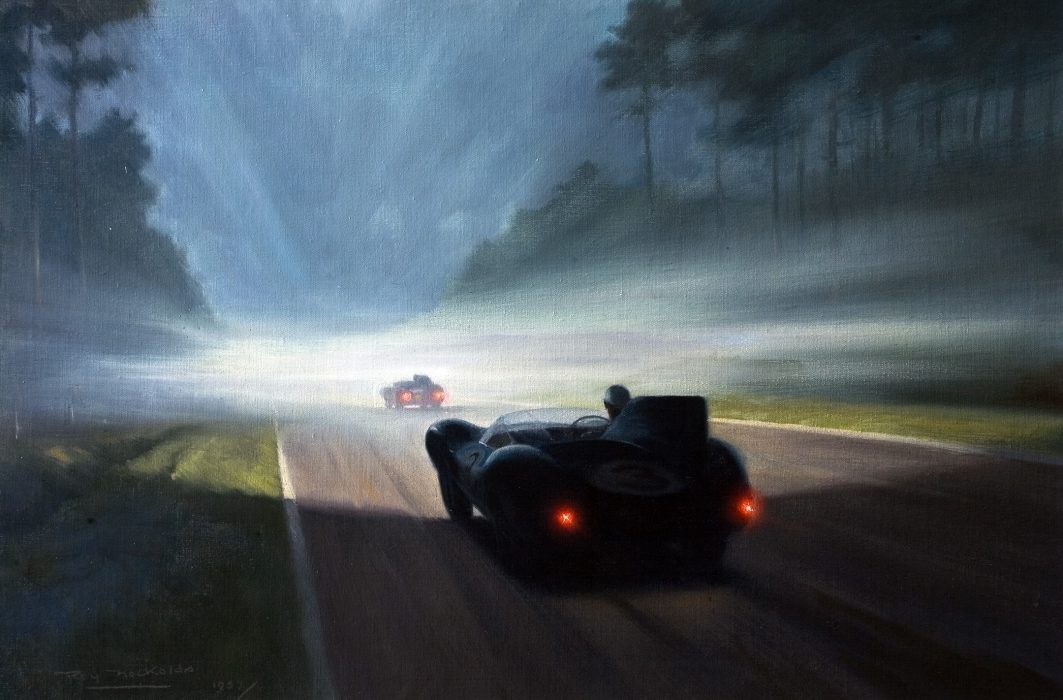
Dawn Mist at Le Mans, Roy Nockolds, 1957
The Artwork
This is one of nine paintings by artist Roy Anthony Nockolds in the Jaguar Daimler Heritage Trust’s Collection, most of which were commissioned by Jaguar Cars, and depicts the 1957 Le Mans winning, D-type, car # 3, being driven by Ron Flockhart and Ivor Bueb.
Nockolds chose an unusual angle to feature the 1957 Le Mans Race. He shows the race winning D-type from the back in the early dawn with low-lying mist that made driving hazardous. The headlamps reflect off the mist to illuminate the D-type and the bright red tail lamps show that the driver has just touched the brakes before putting on power for the Mulsanne Straight. There is sufficient light to show enough detail in the surrounding area and the car in front to complete the composition that lacks nothing in accuracy or excitement.
The painting is currently on public display in the Collections Centre at the British Motor Museum at Gaydon.
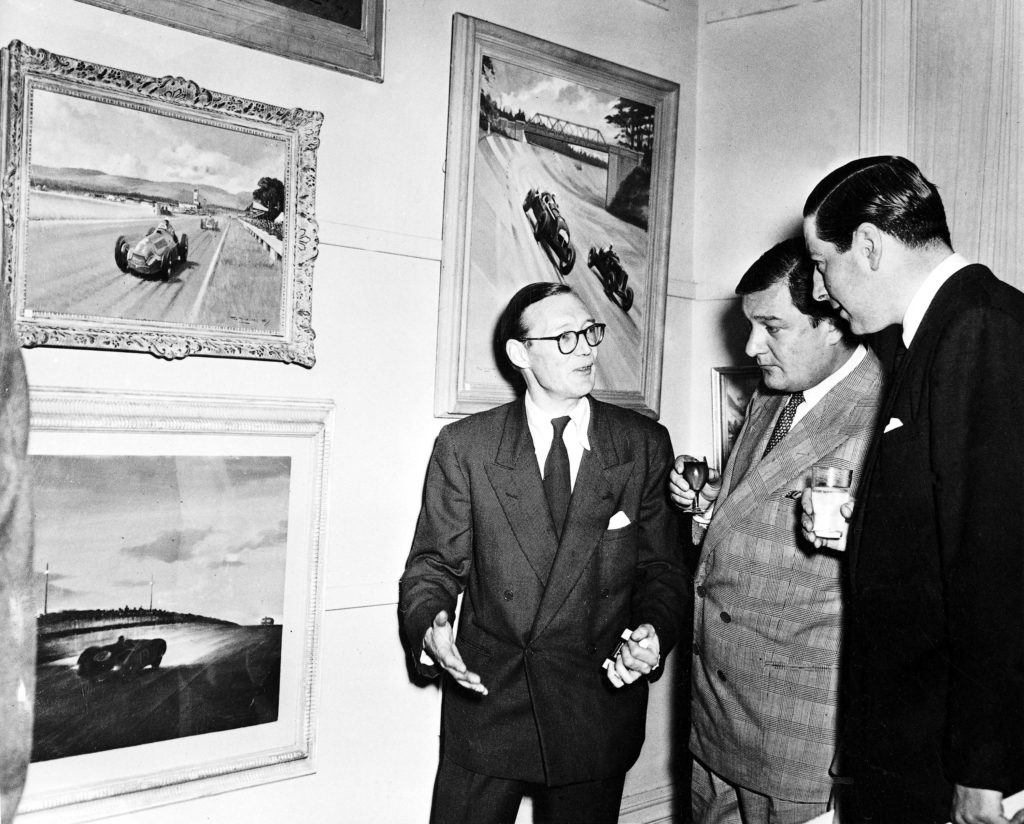
The Artist
Roy Nockolds was born in Croydon in 1911. He always claimed that his only successful subject was art and this was confirmed by two certificates from the Royal Drawing Society in 1922 (age 11) and 1923 (age 12). According to Nockolds’ recollections he first visited Brooklands in 1924 (age 13) where he became impressed by the power and speed of the racing cars and within two years, he was producing motoring art. By the time he was in his teens he was getting his pictures published in the motoring press. His early work was mainly pencil and charcoal drawings, but he also used ink, scraperboard, lino cut and dry point etching as well as watercolours.
F Gordon Crosby was already illustrating for The Autocar and Nockolds was fortunate to have most of his early work published by Motor Sport and Light Car. Although to his credit, Autocar was publishing full page reproductions of some of his etchings in 1932 (age 21). The first recorded exhibition of his work was in December 1934 at the Lombard Restaurant, Cheyne Walk, Chelsea.
Around this time he was working as a freelance artist although some of his work was being used by The Motor to illustrate a weekly series of famous corners on racing circuits.
The start of war in 1939 brought a cessation of motor racing for the duration and Nockolds carried on working from his London studio as a general illustrator and for the services, particularly the RAF producing propaganda art.
In 1942 he was asked to look at improving the camouflage of night fighters. He noticed that a white owl was more difficult to see against a night sky than a dark bird. His idea was to paint the leading edge of the wing and underside of the aircraft white and the top of the aircraft black making it difficult to see from above and below. He prepared a painted model of a De Haviland Mosquito aircraft which was transferred to a full sized plane, resulting in the whole of 151 Mosquito Squadron being converted to the new scheme within days. Other camouflage work led to him being called up into the RAF at the end of 1942, initially as a Clerk, but by 1943 he was posted to the aircraft research station at Farnborough where he had civilian status. He continued the propaganda paintings and his work on camouflage of aircraft, particularly bombers and accepted commissions to supplement his income. The end of the war saw the restart of racing and he resumed his motoring artworks including commissions from car makers such as Ford, Standard, Rover, Rolls-Royce and the Rootes Group and component manufacturers such as Lockheed and Lucas.
It was during this period that he was commissioned by Jaguar and some of the sponsors and suppliers to produce all the paintings that we have in our Artwork Collection. Nockolds’ connection with Jaguar began when the Esso Petroleum Company commissioned him to depict Le Mans 1951 when Peter Walker and Peter Whitehead drove their C-type through pouring rain to give Jaguar their first victory at Le Mans. He then worked closely with Jaguar’s PR Manager Ernest (Bill) Rankin for the next decade undertaking a series of commissions, many of race winning situations but also pictures for calendars, Christmas cards and advertising posters. He was a master of combining light and texture into his work to give the impression of speed and this comes across in several of our paintings.
His work was displayed in many exhibitions in the UK and twenty-four of his paintings were exhibited in New York in 1960 in an exhibition entitled ‘British Motoring Achievements’. This was a collection of paintings depicting outstanding performances of British cars during the previous ten years including some of our race winning Jaguar pictures.
Nockolds took a very keen interest in the Brooklands society founded in 1967, being an early Committee Member and the Chairman from 1976 to 1978, only resigning with the onset of ill health. He was elected Chairman of the Guild of Aviation Artists in 1975, and continued to paint late into his life before passing away in 1979.
Jaguar D-types and the Le Mans Race
Jaguar Cars won the Le Mans race in 1951 with their new C-type – first time out, and then again in 1953 with a disc-brake equipped C-type. For 1954 the car evolved into the D-type with a central tub replacing the tubular space frame, but still powered by the XK engine and the same Moss gearbox. Duncan Hamilton and Tony Rolt who had won in 1953 only managed to come 2nd in 1954, which for any other company would have been deemed a success. Jaguar tried again in 1955, the year the race was marred by the horrific crash when a Mercedes flew into the crowd. Mercedes later withdrew their team and Mike Hawthorn went on to win for Jaguar, but under William Lyons’ instructions the win was not celebrated.
Jaguar returned in 1956 for a resounding victory taking 1st, 4th and 6th places. Following this race William Lyons announced that Jaguar would withdraw from racing as they needed to concentrate on making and selling cars – which was actually the point of the whole exercise.
1957 Le Mans Winning D-type – Chassis XKD606
The Jaguar factory in Browns Lane, Coventry suffered a major fire in February 1957, and even had Jaguar not withdrawn from racing in 1956, they probably would have done so at that point. However the marque was represented at the 1957 race by 5 D-types entered by other teams: two from Ecurie Ecosse, one from Ecurie Los Amigos, one from Ecurie Nationale Belge and Duncan Hamilton entered his own D-type.
While the 1956 win had been impressive, 1957 could well be described as a whitewash. The Jaguar D-types finished 1st, 2nd, 3rd, 4th and 6th with a single Ferrari splitting them only one lap ahead of Hamilton, taking 5th place. This made it five Le Mans wins for Jaguar and three in a row!
The Ecurie Ecosse car pictured, # 3 (chassis XKD606) was driven to victory by Ron Flockhart and Ivor Bueb. It had been built in 1956, the last one made, and entered by Jaguar Cars for the 1956 Le Mans but failed to start as it was damaged in practice. Jaguar sold it to the Scottish team of Ecurie Ecosse ran by David Murray. He took delivery in November 1956 and painted the car in his racing colour of metallic blue.
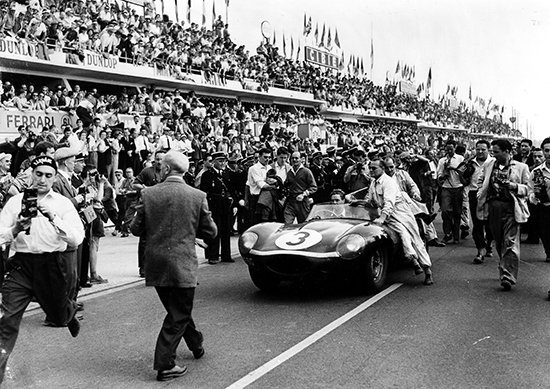
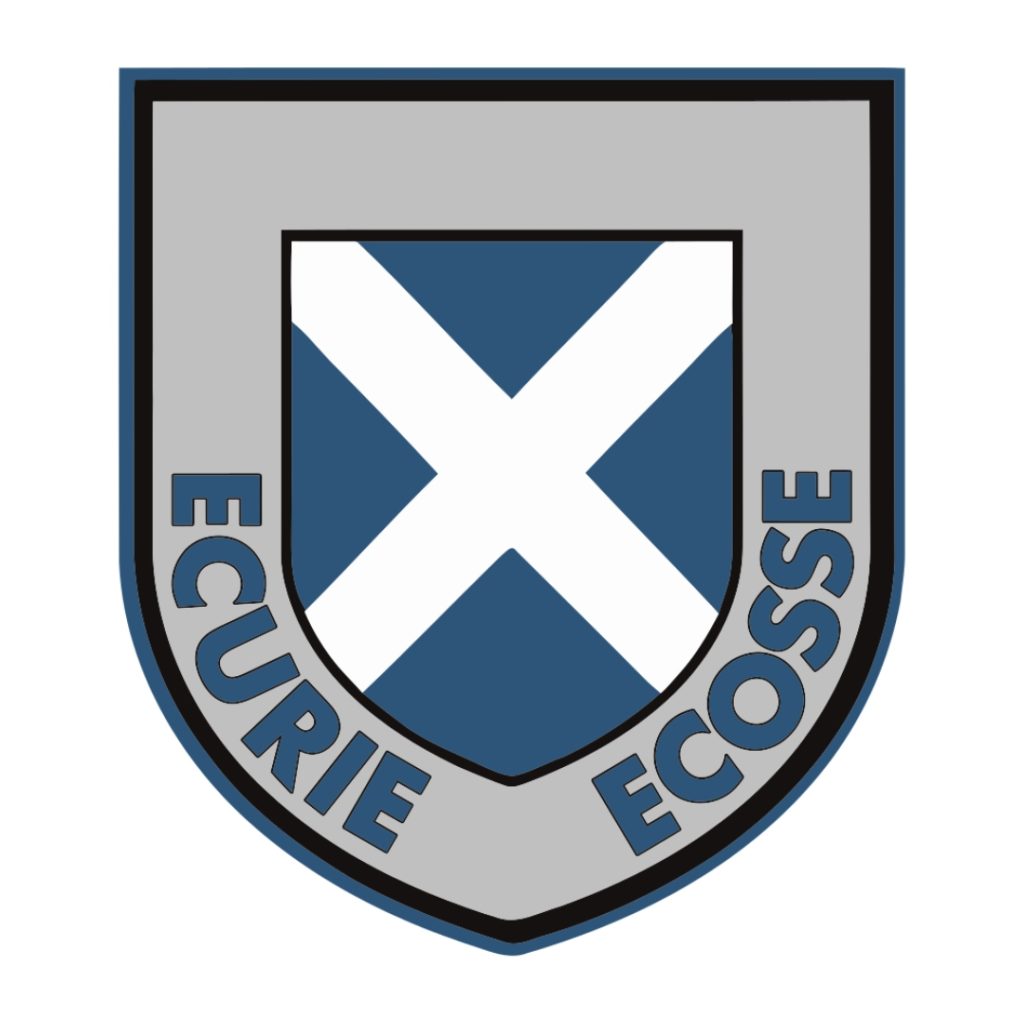
Its first race for Ecurie Ecosse was in Buenos Aires in January 1957 but was crashed and returned to the factory to be rebuilt. It then raced in the Nürburgring 1,000 km in May, finishing 16th, before going on to Le Mans. Ecurie Ecosse continued to race it throughout 1958, including another visit to Le Mans, and 1959. Murray then took it to the USA to race in 1960. Following its return to the UK it was sold to another Scot, Jack Woher in 1961 who continued to race it before moving it on again in 1962. Racing continued including another major crash and re-built before moving on to France and going through a few more sets of hands. In 1992 it was sold at Christies Auction to Mr Louwman of the Dutch National Motor Museum where it resides in what is known as the Louwman Collection.
1956 D-type Chassis XKD605 – registered 393 RW
The Jaguar Daimler Heritage Trust has one of the 1956 built D-types in our collection – chassis XKD605 the penultimate D-type built. This is very similar in specification to the Ecurie Ecosse car, albeit painted in Jaguar’s racing colour of British Racing Green. This was also entered for the 1956 Le Mans, coming 6th, driven by Mike Hawthorn but won the Rems 12 hour race.
XKD605 is normally on display at the British Motor Museum in Gaydon. The car is MOTed annually and kept in running and driving condition and has been run at Goodwood, Coventry Motofest and numerous other Jaguar related events.
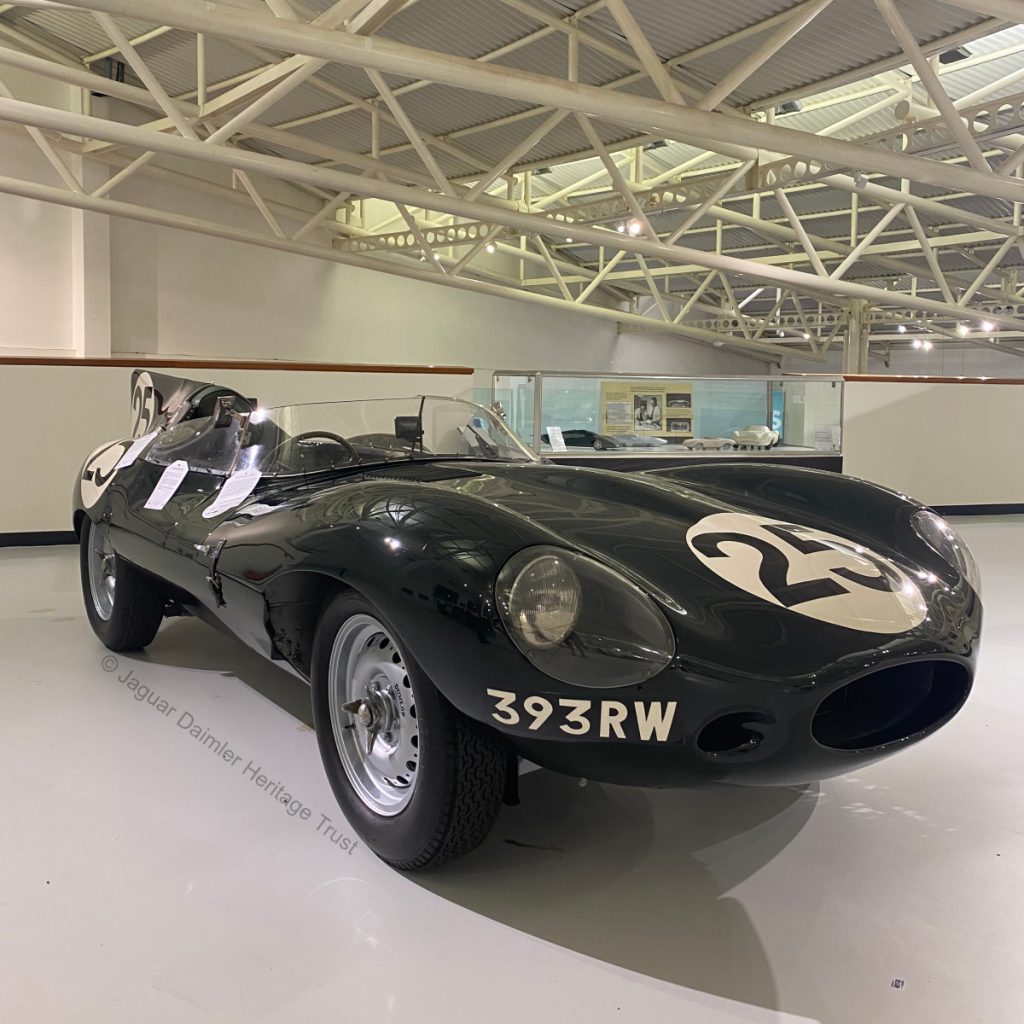
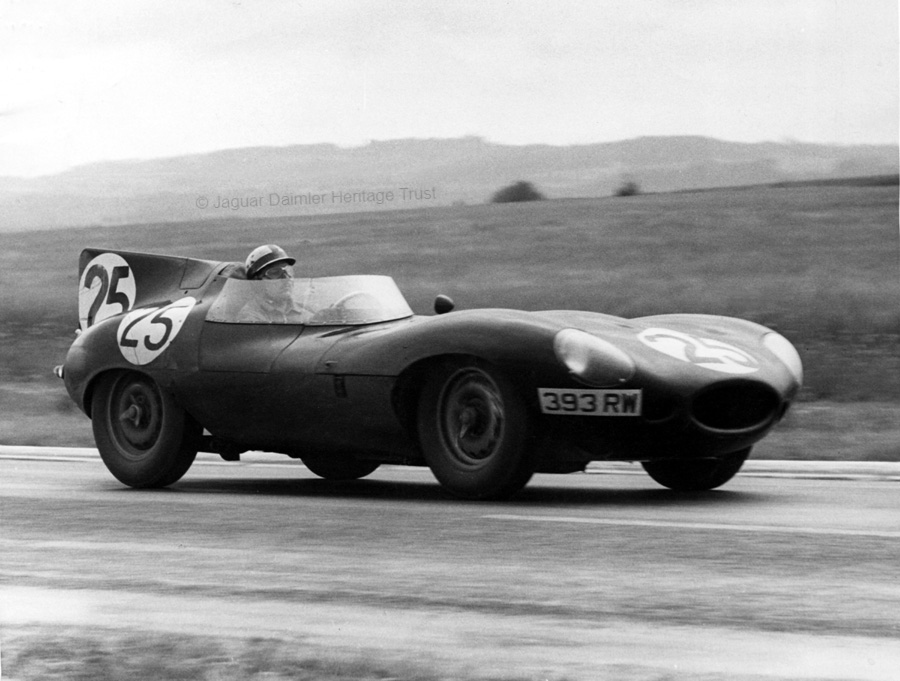
Click the button for more information on 393 RW (XKD605):